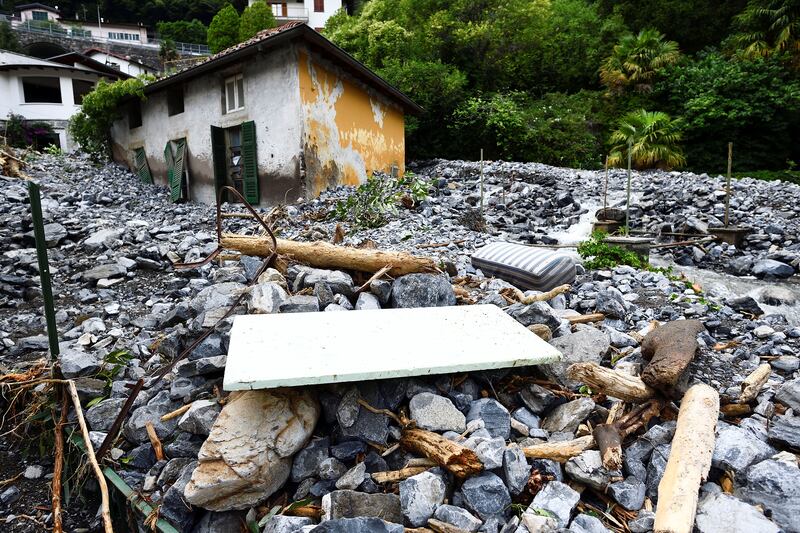Towns around Italy’s Lake Como were hit by mudslides and floods on Tuesday, after storms an agricultural industry group said were examples of increasingly extreme weather.
Italian firefighters carried out more than 60 rescues after storms wreaked havoc around the picturesque lake, ringed by mountains, in northern Italy.
An elderly woman trapped in her home was taken to safety, as was a person with a disability and a caregiver isolated by a landslide.
No deaths or injuries were reported.
In the hardest-hit town, Brienno, on the lake’s western shore, 50 residents were trapped inside their homes when a landslide caused a gas leak.
Further south, in Cernobbio, firefighters evacuated an apartment block at risk of flooding.
“We are facing in Italy the consequences of climate change, with a trend toward tropicalisation and the multiplication of extreme events,” the agricultural lobby group Coldiretti said.
It cited more frequent, sudden and violent storms, short and intense rainfall and sunny skies that rapidly became overcast.
Coldiretti estimated that €14 billion ($16.56 billion) of damage to agricultural production, buildings and infrastructure had been caused in the past decade by climate change-induced events such as flooding and landslides.
On Monday, hailstones the size of tennis balls damaged about 100 vehicles and stalled traffic on a main road near Bologna, northern Italy.
Video showed cars with windshields shattered by the hailstones pulled over on the side of a road as stunned motorists and passengers surveyed the damage.
While hailstorms are a common summer feature in Italy’s Po River Valley, meteorologist Luca Lombroso told the Bologna daily newspaper Il Resto del Carlino their strength and frequency this year was unusual.
Coldiretti said its analysis shows that hailstorms are occurring at the rate of 11 a day this summer, with 386 recorded this year.
Until recently, they would occur a few dozen times a year, but there were 92 in 2018 and 198 in 2019.
“The dimension of the hailstones also has changed, growing considerably in the last years with real ice blocks falling from the sky – even bigger than tennis balls,” Coldiretti said.
Hailstorms can wipe out orchards and vegetable fields. Coldiretti attributed a 40 per cent drop in peach and apricot harvests and a 50 per cent drop in nectarine yields to “this crazy climate”.







